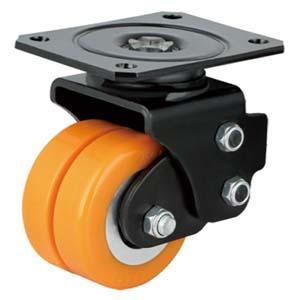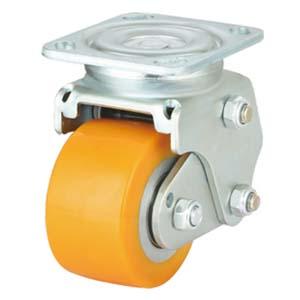- Best Price! Direct China Factory!
- Send Inquiry
WhatsApp/WeChat: 0086-137-36454395
Autonomous Guided Vehicles (AGVs) are self-guided material handling systems that are designed to transport materials, parts, and products within a facility. AGVs are equipped with a navigation system that enables them to follow a predetermined path, which can be programmed to change as required.
One of the most critical components of AGVs is the casters. AGV casters are wheels that are attached to the bottom of the vehicle and support its weight while it moves. They are responsible for providing stability, maneuverability, and mobility to the AGV.
There are various types of AGV casters available in the market, and choosing the right one depends on the application and the specific requirements of the facility. The most common types of AGV casters include rigid casters, swivel AGV casters, and suspension AGV casters.
Rigid casters are fixed wheels that are typically used for straight-line movement and are suitable for applications that require stability and support.
Swivel AGV casters, on the other hand, are designed to provide maximum maneuverability, allowing the AGV to turn in any direction.
Suspension AGV casters (Automated Guided Vehicle) are wheels that are mounted on a suspension system and are used to support and move AGVs in a manufacturing or warehouse setting.These casters are designed to provide a smooth and stable ride, even on uneven surfaces, by absorbing shocks and vibrations. The suspension system helps to reduce wear and tear on the AGV, its load, and the facility floor, and also helps to minimize the risk of equipment damage or downtime.
There are several types of suspension casters, including air-filled,spring-loaded, and hydraulic suspension systems, each with their own benefits and drawbacks. When choosing suspension AGV casters, it is important to consider factors such as the weight of the AGV and its load, the type of floor surface, and the AGV's operating environment, to ensure that the right type of caster is selected for the specific application.
Another important factor to consider when choosing AGV casters is the load capacity. AGV casters are designed to support different load capacities, ranging from a few hundred pounds to several tons. The load capacity of the casters is critical, as it directly affects the efficiency and productivity of the AGV.
AGV casters are also available in different materials, including rubber, polyurethane, and metal. Rubber casters are the most common and are suitable for light to medium loads, while polyurethane casters are ideal for heavy loads and provide improved shock absorption. Metal casters are how designed for extreme loads and environments, making them suitable for harsh industrial applications.
In conclusion, AGV casters play a critical role in the performance and efficiency of AGVs. Selecting the right type of casters depends on the specific requirements of the facility, including the load capacity, maneuverability, and stability requirements. By choosing the right AGV casters, facilities can improve the overall performance and productivity
of their AGVs.



 English
English Spanish
Spanish German
German Russian
Russian Arabic
Arabic Portuguese
Portuguese Italian
Italian French
French Hebrew
Hebrew Turkish
Turkish